search for a Trip
Tangjiahe National Nature Reserve
Introduction to Tangjiahe Nature Reserve
Tangjiahe Nature Reserve was established in 1978 and upgraded as the national class nature reserve in 1986. It is a comprehensive nature reserve with giant pandas and their habitats being the major protection. Tangjiahe is located in Qingchuan county, Guangyuan city, about 300km away from Chengdu, covering an area of 40,000 hectares.
It is a nature reserve of both protecting wild animal and forests. It’s classified by the WWF as the A class nature Reserve, also the hot place for study wild animal worldwide. It has the reputation of “Natural Gene Stores “, “ Home of Life” and Green Pearl of Minshan Mountain Range.

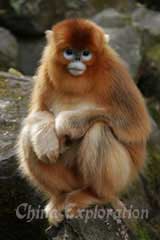
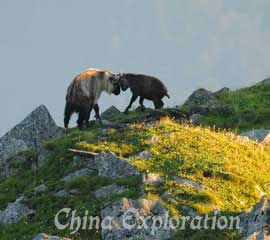
Tangjiahe is of the sub-tropical monsoon climate and is rich in biological resource and picturesque natural scenery. With an elevation of from 1150 meters to 3837 meters and rich in biological resources, there are diverse recourses in Tangjiahe Nature Reserve.
According to investigation, there are 430 kinds of vertebrates which belong to 257 genera of 101 families, including 72 state- level key protected species. Among them, 13 are listed as first-class protected species such as giant panda, golden monkey and takin. It is said about 60 giant pandas, more than 1000 golden monkeys and over 1200 takins living here.
Tangjiahe also boasts 2422 identified vegetation species that belong to 969 genera of 267 families, including 12 state –level key protected species. Tetracentraceae, euptelea, ceridiphyllum japonicum, magnolia denudate and other ancient tertiary relict plants can all be found there. Among the state-protected endangered plants, 4 are under first-class protection including ginkgo, dove tree and yew.
Except vertebrates and plants, Tangjiahe is also a paradise for birds. It has 260 kinds of birds, accounting for 41% of the total in Sichuan province. Birds of key protection home and broad are up to 47 kinds, among which 6 are under first-class national protection such as golden eagles and Chinese monals and 41 are under second-class national protection such as blood pheasant and blue-eared pheasants.
It’s easy to find common hoopoe, crested kingfisher, red-billed magpie etc. What’s more, scientists had found Rusty-throated Parrotbill near Dacaotang (Humble cottage) in Tangjiahe reserve. The best time for birding is from July to August. It is endemic to a small area of central China.
This reserve is also famous for its Old Yinpin Road in era of Three Kingdoms, ruins of Red Army’s Long March and other remarkable natural views.
Brief Introduction to animals
Takin: Takin is also called cattle chamois and wildebeest. It belongs to the family Bovidae of Artiodactyla order, and first class national protected animal. Its distribution in China is similar to that of giant pandas. It is rare in number and has been included in the Convention on International Trade in Endangered species of Wild Fauna and Flora Appendix III. In Bhutan, takin is considered national animals. About 1200 takins are distributed in Tangjiahe.
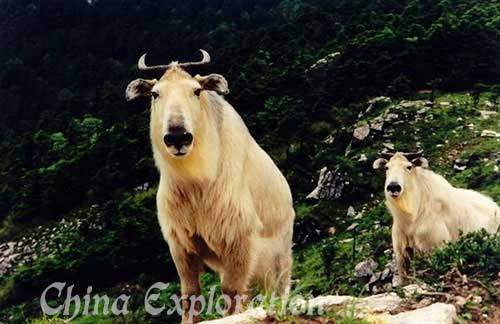
Other Animals:
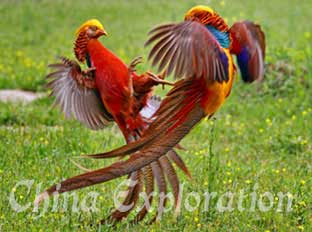
Golden pheasant

Mrs Gloud’s Sunbird
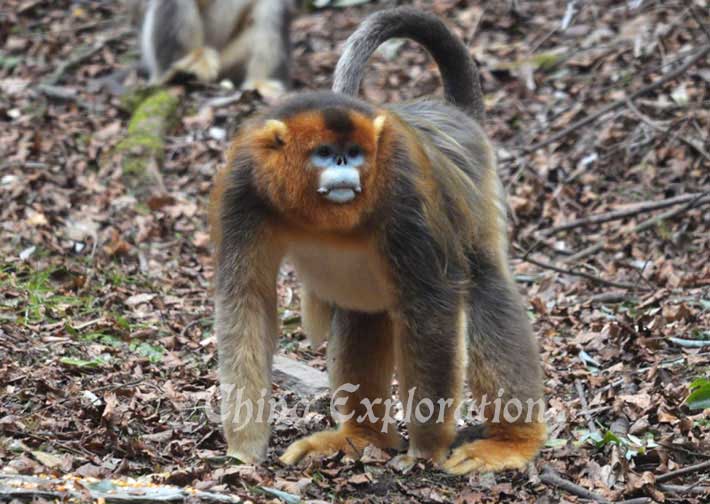
Golden monkey
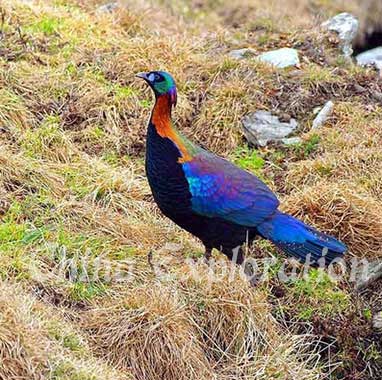
Chinese Monal
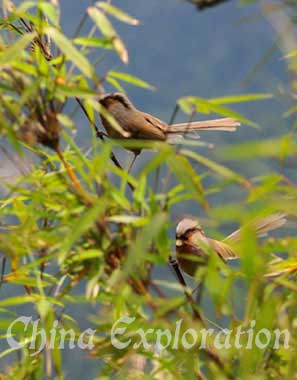
Rusty-throated Parrotbill
Related Tours:
China Attractions Guide
- Anhui Attractions
- Beijing Attractions
- Chongqing Attractions
- Fujian Attractions
- Gansu Attractions
- Guangdong Attractions
- Guangxi Attractions
- Guizhou Attractions
- Hainan Attractions
- Henan Attractions
- Hongkong Attractions
- Hubei Attractions
- Hunan Attractions
- Inner Mongolia Attractions
- Jiangsu Attractions
- Jiangxi Attractions
- Manchuria Attractions
- Ningxia Attractions
- Qinghai Attractions
- Shaanxi Attractions


